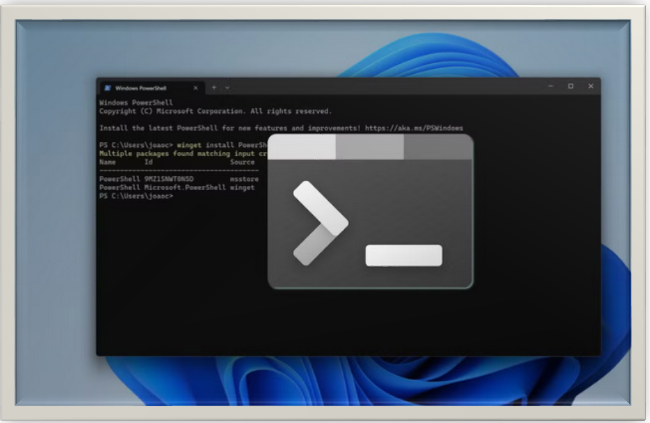HOW TO VIEW AND SET FILE AND FOLDER PERMISSIONS IN POWERSHELL
Learn how to view and set file and folder permissions in PowerShell using commands like Get-Acl and Set-Acl. Manage access control efficiently!

INTRODUCTION:
You can effectively manage your Windows system with PowerShell. In this control, managing file and folder permissions is a key perspective. Permissions dictate who can access, modify, or remove these documents and folders. To protect your information and ensure that only users who have been granted permission can access certain files and folders, it is essential to comprehend and manage file and folder permissions. We'll look at how to view and set file and folder permissions in PowerShell in this beginner-friendly article, allowing you to manage permissions efficiently and securely.
Understanding File and Folder Permissions;
File and folder permissions dictate who has access to, may modify, or can remove files and folders from your computer. These consents ensure the security and integrity of your files and directories by helping to prevent unauthorized access to or alteration of your information. Comprehending viewing and modifying file and folder permissions is fundamental to effectively managing access to your data.
Understanding Permissions:
Permissions determine who can access the files and what they can do with them.
Read: Enables users to view the contents of the folder or file.
Write: Allows users to modify the folder's or file's content.
Execute: Enables users to run programs stored in a folder or file such as exe files.
Full Control: Provides complete access, enabling users to add, remove, or modify permissions.
Step-by-step guide on how to view file and folder permissions in PowerShell
To view file and folder permissions in PowerShell, follow these simple steps:
Step One: Open PowerShell
On your keyboard, press the Windows key, type "PowerShell," and then right-click "Windows PowerShell" and choose "Run as administrator" to open PowerShell with administrative features.
Step Two: Navigate to the directory
To access the directory holding the file or folder whose permissions you require to view, use the "cd" command. For example, you would use the following command to explore the “Documents” folder:
'''
cd Documents
'''
Step 3: View Permissions
Use the "Get-Acl" cmdlet, followed by the path of the file or folder, to view the permissions of a certain file or folder. Execute the following command, substituting the actual filename for "filename.txt":
'''
Get-Acl filename.txt
'''
This will display a list of users or groups along with their respective permissions for that particular file or folder.
For example, to view the permission for a file called "blog" you would use the following command:
'''
Get-Acl blog
'''

This command will provide detailed information on the permissions assigned to the selected file or folder, including the access control list (ACL) sections for various users or groups.
How to Set File and Folder Permissions in PowerShell:
To set file and folder permissions in PowerShell, follow these simple steps:
First Step: Open PowerShell
Launch PowerShell with the administrative privileges as shown in the previous section.
Step Two: Navigate to the directory
Use the "cd" command to navigate to the directory that contains the file or folder whose permissions you need to set.
Step Three: Set permissions
This describes who is granted what permission. The user or group and the permission level (Read, Write, etc.) must be specified.
Get the existing ACL: To retrieve the current permission set, use Get-Acl as directed earlier.
Add the new Rule: Make use of Set-Acl with the recovered ACL, the file/folder path, and the permission rule you crafted.
Use the "Set-Acl" cmdlet with the path of the file or folder and the desired permissions to set permissions for a file or folder. For example, you would use the following command to grant read and execute permissions for a file called "example.txt" to a client named "Jay":
'''
Set-Acl -Path .\example.txt -AclObject (Get-Acl .\example.txt) -AccessRule (New-Object System.Security.AccessControl.FileSystemAccessRule("Jay","ReadAndExecute","Allow"))
'''
With this command, the necessary user will be granted the read and execute permissions appropriate file.
Remember that changing permissions may impact the security of the system. Make sure you understand who needs access and what level of permission is appropriate before making changes.
For Novices:
Start by viewing permissions to understand the current access structure.
For simpler permission assignments, think about using pre-built permissions cmdlets like Grant-Acl.
If you have questions about specific permission levels, consult Microsoft's documentation for detailed explanations.
CONCLUSION:
Using PowerShell to view and modify file and folder permission could be a useful tool for managing access to your data and guaranteeing its security. Indeed beginners can quickly view and set permissions using PowerShell commands by following the instructions provided in this guide. PowerShell provides the tools you need to effectively manage file and folder permissions whether you want to identify who has access to a certain file or grant permissions to a user or group.
Thanks for reading.
If you like the article, consider sharing and subscribing. ;)




